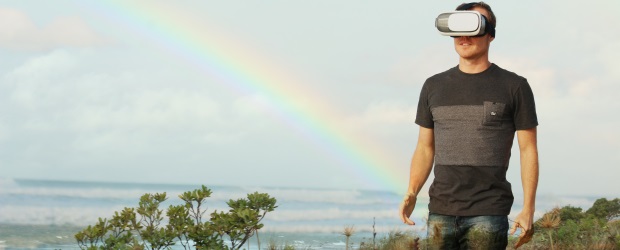If augmented reality (AR) and virtual reality (VR) devices are going to succeed, businesses worldwide are going to need to adopt them in order to expand their operations. With the Oculus Rift, HTC Vive, or PlayStation VR, and popular AR experiences like Pokemon Go dominating the mindshare of this new type of tech, how these devices can change how businesses and organizations do business is often left in the dust.
Enter Microsoft Corp. with the HoloLens – its AR headset. On top of a gaming experience the glasses could provide, the tech giant has been pushing the way the glasses can revolutionize business processes. Whether it be in architecture, retail, or manufacturing, the HoloLens has taken a step away from the gaming focus of other devices, and dialed in on how it can transform the business. The question is – can it?
I got a chance to try out the HoloLens myself at the Microsoft Technology Centre in Toronto thanks to Avanade Inc., a Microsoft partner who has been developing business applications for Canadian retailers.
Essentially, Avanade is using the HoloLens to develop a system that would eliminate the need for retailers to have physical mockup locations. By creating virtual planograms that are fully customizable, retailers could create these mockups virtually.The HoloLens could also be used in-store to reorganize on the fly without creating the mess that normally comes with shuffling product around.

ITWC reporter Alex Radu using the Hololens to reorganize some virtual laundry products.
I was able to pick up the needed HoloLens gestures fairly quickly – there are only two – and tinker around with a virtual mockup of a case of laundry products that would be in a grocery store. Despite learning the hand movements, the actual act of moving around and placing new product was tedious to say the least.
To click on objects the HoloLens has a crosshair. The cursor is accurate, but you have to stare at a virtual object to “pick it up” and then it follows your gaze as you look across the shelf. This was tedious I’d be able to move products around more quickly just using my hands.
For instance, Avanade’s technology innovation adviser, Bruno Capuano, told me that instead of using just the HoloLens, adding a tablet might work better in this case. That would make it easier to reorganize the shelves, but you’d still have the headset for that virtual experience.
The virtual mockups work well – it feels almost exactly like it would be seeing it in a store. However, I would suggest using a space with very little clutter when making these mockups. Since these shelves are the same size virtually as they would be in-store, they fill up a room fast.
But retail planograms aren’t the only use for Hololens, and Microsoft has been proactive advertising other use cases on the HoloLens website.
Front and centre are partnerships with the likes of Volvo, who are using the HoloLens in the manufacturing process; Trimble, who are using the HoloLens to extend current Trimble tools and create 3D models as life-like holograms for architecture and construction professionals; and Jet Propulsion Laboratory, who are using the headset to explore Mars using holograms of Mars Rover images, and train jet engine repair virtually.
Between retail planograms, vehicle manufacturing, architecture, and exploring Mars, it’s clear to me that there will be good uses for the HoloLens from a business perspective – I’m just not sold on how practical it will be yet. The eye-tracking based UI was just too slow.
The headset isn’t light and the possibility of neck strain developing after 30 plus minutes of using the device is a very real one. Limiting employees to working for only 30 minute to hour chunks isn’t exactly the improvement businesses are hoping for.
Step one moving forward with the HoloLens is to make a lighter, and more comfortable headset that someone wouldn’t mind wearing for hours a time. The device in its current state is clunky, and I wouldn’t expect a factory worker to accurately do their job with it on.
Otherwise, the possibilities look promising, especially from a retail planogram perspective.
The HoloLens Development Edition is currently available in Canada for the steep price of $4,000 at the Microsoft Store.





